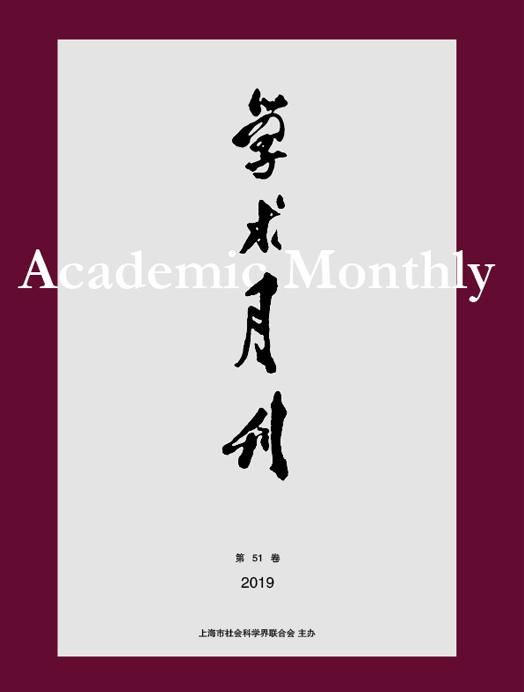Citation:
WANG Rigen. The Collapse and Development of Sandbars at the Mouth of the Yangtze River from the Qing Dynasty to the Republic of China—— Centered around Changshu and Jiangyin[J]. Academic Monthly, 2024, 56(3): 184-195.

The Collapse and Development of Sandbars at the Mouth of the Yangtze River from the Qing Dynasty to the Republic of China—— Centered around Changshu and Jiangyin
-
Abstract
With the acceleration of the “eastward migration of the coastline” process in the Qing Dynasty,the environmental changes in the mouth of the Yangtze River estuary were significant,and the interaction between runoff and tidal currents caused the collapse and instability of sandbars along the Changshu section of Jiangyin until the end of the Qing Dynasty.The sandbars in the Changshu section of Jiangyin at the mouth of the Yangtze River showed a large area of siltation and relatively stable state from the late Qing Dynasty to the early Republic of China,and gradually showed a trend of merging towards the south bank.At first,most of the cultivators on sandbars relied on land reclamation to maintain their basic livelihoods.However,due to the poor ability of sandbars to resist natural and man-made disasters,coupled with relatively weak official administrative intervention,sandbar residents embarked on a path to achieve more comprehensive development of sandbars through commercialized agricultural production and the expansion and cooperation of different sidelines.
-

-
References
-
Access
-
-
[1]
Qun LUO
. Study on the Reclamation and Development of Yunnan Border Areas in the Republic of China. Academic Monthly,
2018, 50(10): 159-174.
-
[2]
CHEN Shiyi
. Economic Growth and Environmental Justice —— Evidence from China's Economic Zone Program. Academic Monthly,
2023, 55(7): 31-45.
-
[3]
HUANG Dayuan
. . Academic Monthly,
2023, 55(12): 199-203.
-
[4]
Lin QI
. The Path of Technology-oriented and the Construction of Art Theory. Academic Monthly,
2021, 53(7): 151-160.
-
[5]
,
,
,
. . Academic Monthly,
2018, 50(03): 5-32.
-
[6]
,
. . Academic Monthly,
2016, 48(06): 37-52.
-
[7]
,
. Industrial Policy, Firm Exit and Regional Production Efficiency Dynamics in China. Academic Monthly,
2018, 50(04): 33-45.
-
[8]
. . Academic Monthly,
2017, 49(11): 58-89.
-
[9]
Jian SU
. The Theoretical Logic, Empirical Support and Realization Path of Language for Poverty Alleviation. Academic Monthly,
2020, 52(9): 67-73.
-
[10]
Zongyi ZHENG
. On the Three Interpretations of Zhang Zai’s Philosophy ofQi. Academic Monthly,
2021, 53(5): 29-38.
-
[11]
YANG Xianbin
. On Rules for the Fair Use of Private Information and the Optimized Paths. Academic Monthly,
2023, 55(6): 101-115.
-
[12]
SHEN Kunrong
. Data Foundation System Construction: Realistic Challenges and Path Selection. Academic Monthly,
2024, 56(1): 60-69.
-
[13]
. . Academic Monthly,
2016, 48(01): 75-86.
-
[14]
. . Academic Monthly,
2017, 49(11): 67-101.
-
[15]
Zhiqing DONG
, Hui WANG
. Urbanization, Economic Agglomeration and Heterogeneity of Regional Economic Growth. Academic Monthly,
2019, 51(10): 54-66.
-
[16]
Jianyong FAN
, Jingwen YE
. Domestic Trade Circulation: The Perspectives of Regions and City Clusters. Academic Monthly,
2021, 53(5): 65-76.
-
[17]
Tianjian LI
. The Imprint of History: Observing Regional Development from the Long-term Impact of Major Projects. Academic Monthly,
2023, 55(4): 100-113.
-
[18]
Zhibiao LIU
. Regional Market Integration and Governance Mechanism Innovation in the Yangtze River Delta. Academic Monthly,
2019, 51(10): 31-38.
-
[19]
. . Academic Monthly,
2016, 48(01): 21-30.
-
[20]
,
,
. . Academic Monthly,
2016, 48(07): 89-98.
-
-



 沪公网安备 31010102003103号
沪公网安备 31010102003103号 DownLoad:
DownLoad: